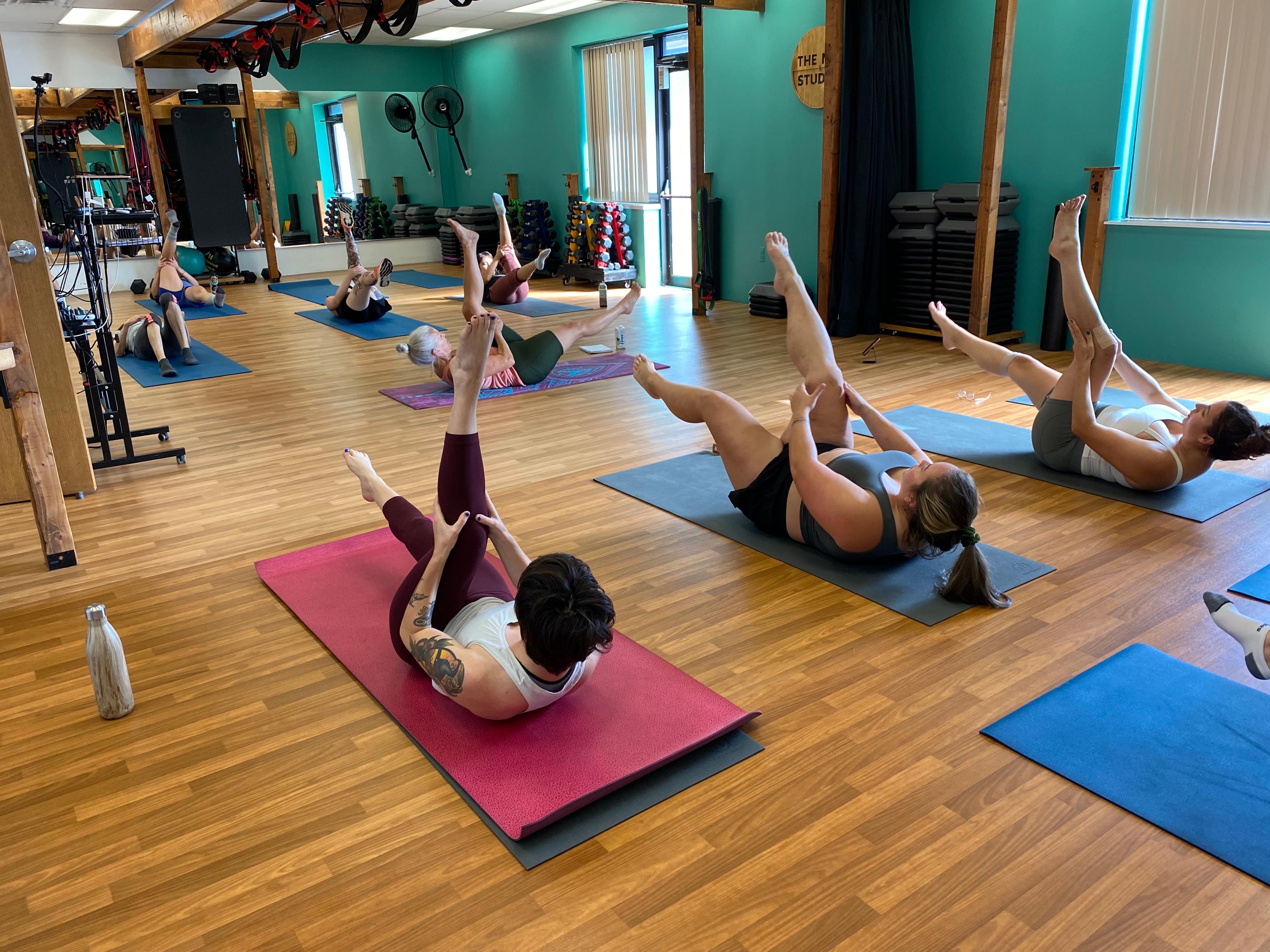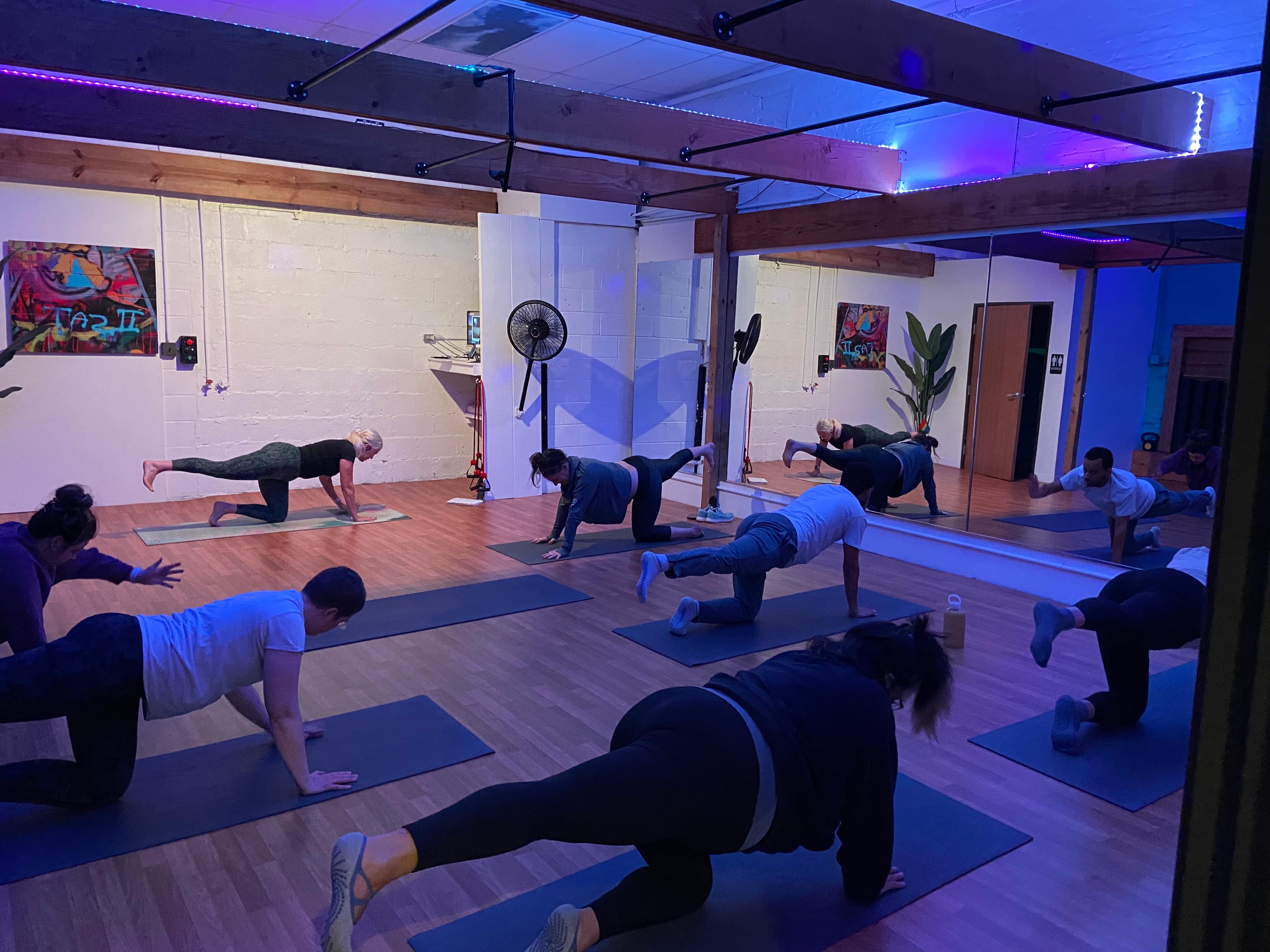Find Your Fit: Thinking About Trying Pilates? Here are 8 Tips for Beginners
Jake Newby
| 5 min read

Could 2025 be the year you give 2024’s most popular workout a shot?
Pilates was developed by its namesake, German physical education advocate Joseph Pilates, during World War I to rehabilitate soldiers injured in battle. The exercise evolved into one that dancers and athletes utilized to recover from injuries. It has continued to evolve to incorporate breathing techniques and general mindfulness to complement its core-strengthening, balance-improving physical elements.
If you want to see what all the buzz is about and join your first Pilates class, check out this beginner’s guide, featuring guidance from 21-year Michigan fitness instructor Julia Collins.
8 things to know about Pilates before attending your first class
Pilates is for everybody: spotlighting low-impact exercises has been a recurring theme in the Find Your Fit series, and Pilates filly aligns with that theme. Your feet never leave the ground during a Pilates class, which should make your knees happy. There may be a perception that Pilates is just a workout for women, but plenty of big, burly weightlifters have signed up for Collins’ classes to help improve flexibility and even out muscle imbalances.
“They’re doing all these reps lifting really, really heavy objects, but they’re not taking a lot of time working through a full range of motion,” Collins explained. “The one thing that’s really great about Pilates is, there is always opportunities for stretching the muscles out.”
Modification encouragement and its low-impact nature makes Pilates unintimidating for people of all ages, sizes and genders.
“Male, female, tall, short,” Collins added. “I really feel like it can be for everybody. In the past it was seen as something that seemed very serious, but really, it can be a lot of fun.”
Focus on your breathing: when you first hit the mat to begin a Pilates class, breathwork is paramount.
“It is really common for a human being – we all do this when we’re working hard – to hold your breath, so we always begin with a little bit of breathwork,” she said. “So, that really will relax people and settle down their nervous system a little.”

Keep your own pace: never feel pressured to match the movement and pace of your instructor, who obviously has much more experience. They’re also likelier more flexible. But don't let it get in your head to the point you try and speed in and out of movements at their pace, and tire yourself out.
“If you do that, you’re bound to disappoint yourself,” Collins said. “If you have really great range of motion but you don’t have great strength and you can’t keep up the speed or do the number of reps as the teacher, don’t worry about that. Take a break if you need it.”
Take advantage of modifications: the knees and wrists are vulnerable joints. They’re also a big part of any Pilates class. Collins recommends specific modifications when working them out.
“Kneeling in a tabletop position is really hard for a lot of people,” she said. “What I always have them do is try that movement as close to a wall as possible. Because if kneeling is too much, you can put your hands against a wall and do the same leg movements from a standing position that we would do on the floor.
“Sometimes people also say they can’t be on their wrists for very long,” she added. “Frequently, I’ll tell people to either rest on their forearms or fists to do certain movements on all fours. When you’re standing to do the kneeling exercises, you are still working the same muscle groups. So don’t be afraid or don’t be too stubborn to modify.”
Rest your head when you need a break: many newcomers, Collins said, make a repeat mistake as classes dig into abdominal workouts.
“Failing to support the head is something I see quite often,” she said. “A lot of people who are new end up saying, ‘oh my gosh, my neck was so tired.’ Well, when it gets really tired and you’re holding your head up looking toward your abdominals while you’re doing an exercise, a lot of people clench and tighten up and do whatever they can to keep their head from touching the floor. I always say, ‘when you need a break, just take it.’”
Prepare for sore abdominal and glute muscles: “almost always I hear about glutes and abs,” Collins said. “What people don’t realize is, your abs and your glutes support your lower back. And we do a lot of work in those areas. When you do Pilates work all those really deep muscles that affect your posture, so your back all the way down to your glutes.”
Don’t be sedentary in the days after your initial classes: If you’re sitting around at home the day after your first Pilates class and you don’t feel very sore, the third day is going to be rough if you don’t squeeze in at least a little bit of activity on that second day.
“I always tell people to go for a swim in the pool, go for a bike ride, even just a walk with your dogs,” Collins explained. “Do anything instead of being sedentary that next day. Or else your muscles are going to be talking to you, that’s for sure.”
Give yourself grace! Finally, Collins has seen beginners get too down on themselves far too fast in her many years of instructing Pilates.
“For almost anything that people are really new to, they just don’t give themselves grace,” she said. “It’s really easy to be like, ‘oh my gosh, that was really hard. I got really tired really fast.’ Almost anything you’re ever going to be brand new to is going to feel like that. So just give yourself some grace, take a little break in that first class or second class. Because everything will come if you stick with it and progress at your own pace.”
The Find Your Fit series launched to introduce people of all ages to workouts that may not be on their radar. It's about helping people explore fun and new ways to find a workout they can consistently perform and enjoy.
More from the Find Your Fit Series:
- Give These Low Impact Exercises and Activities a Try this Winter
- Bounce Your Way to a Great Cardio Workout Using a Mini Trampoline
- Qigong’s Low-Impact, Full-Body Movements and Mindfulness Techniques Can Benefit Older Adults
Photo credit: Sarah Kreiner





